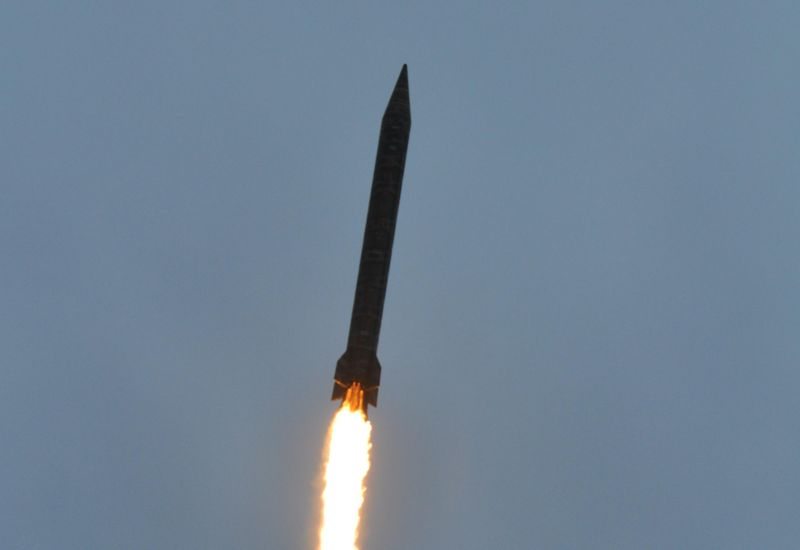Analysis reveals a newly identified surface-to-surface missile base deep in the Saudi desert, capable of targeting Israel and Iran, according to IHS Inc. (IHS), the leading global source of information and analytics.
As fears of a nuclear-armed Iran continue to stoke tensions in the Middle East, there are questions over whether Saudi Arabia might also purchase nuclear weapons. IHS Jane’s Intelligence Review has looked in detail at the Saudi missile programme and assessed Riyadh’s delivery capabilities.
Using satellite imagery, IHS Jane’s Intelligence Review identified an undisclosed surface-to-surface missile facility in Saudi Arabia. With a different layout to the previously documented Al Sulayyil and Al Jufayr missile bases, this new third site potentially serves as a training and storage complex with the ability to perform operational missile launches.
There are two launch pads at the facility, one appearing to be aligned on a bearing of approximately 301 degrees and suggesting a potential Israeli target, and the other oriented along a bearing of approximately 10 degrees, ostensibly situated to target Iranian locations. IHS Jane’s Intelligence Review assesses that the site likely has a limited operational capacity within a defined target set, and could serve as an off-site storage point for additional missile airframes and propellant stocks.
“While the lorry-launched missiles can theoretically be fired from any location, the idea of having pre-planned directional markers is to ensure that they can be deployed in accurate fashion as quickly as possible. There is a marked out spot for the launch truck to park in, which will facilitate an expedited launch,” said Allison Puccioni, Image Analyst, IHS Jane’s Intelligence Review.
Robert Munks, Deputy Editor, IHS Jane’s Intelligence Review, comments: “The identification of a third missile complex in Saudi Arabia comes as IHS Jane’s Intelligence Review assesses that Saudi Arabia is likely to begin re-arming its missile stock with more modern and accurate Intermediate Range Ballistic Missiles. There has also been recurrent speculation that Saudi Arabia would seek to procure nuclear weapons “off-the-shelf” should Iran develop them, as suggested by former Saudi intelligence chief Prince Turki al-Faisal in 2011. For such short notice, the foundations for both nuclear-capable launch vehicles and for acquiring the warheads will need to have been laid in advance.”
“Our assessment suggests that this base is either partly or fully operational, with the launch pads pointing in the directions of Israel and Iran respectively. We cannot be certain that the missiles are pointed specifically at Tel Aviv and Tehran themselves, but if they were to be launched, you would expect them to be targeting major cities. We do not want to make too many inferences about the Saudi strategy, but clearly Saudi Arabia does not enjoy good relations with either Iran or Israel,” adds Robert Munks, deputy editor of IHS Jane’s Intelligence Review.
Saudi Arabia’s reported attempts to acquire more modern delivery systems do not appear to have been fruitful. This means that Riyadh would have to rely on its ageing fleet of Chinese Dong Feng-3 (DF-3) surface-to-surface missiles. Purchased in 1985, the DF-3 has a range of between 2,650 and 4,000 km dependent on the warhead weight, and is nuclear-capable.
IHS is the leading source of information, insight and analytics in critical areas that shape today’s business landscape. Headquartered in Englewood, Colorado, USA, IHS is committed to sustainable, profitable growth and employs 6,700 people in 31 countries around the world.










